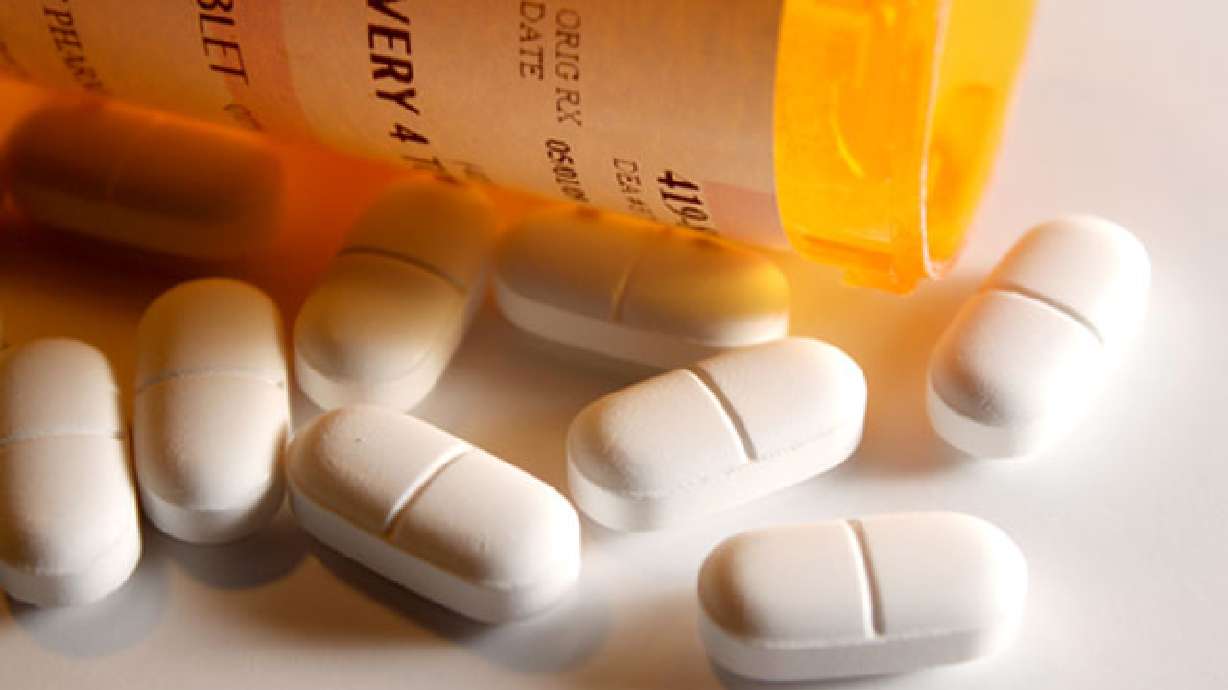Estimated read time: 5-6 minutes
This archived news story is available only for your personal, non-commercial use. Information in the story may be outdated or superseded by additional information. Reading or replaying the story in its archived form does not constitute a republication of the story.
SALT LAKE CITY — Prescription drugs are killing us.
For more than 10 years, the number of unintended drug overdoses resulting in fatalities has increased in the United States. Rather than the illicit drugs (heroin, cocaine, methamphetamines, etc.) taking lives though, nearly 60 percent of unintended fatalities (suicides were not considered) involve prescription medications, especially painkillers and anxiety drugs.
The CDC does offer some suggestions to alleviate the problems involving prescription drugs. One is the monitoring of all prescriptions for opioids including insurance programs and worker’s compensation programs to locate not only “med seekers” that are doctor shopping, but also prescribers that are operating as pill mills. New laws and enforcement techniques may also be needed, and certainly improving access to substance abuse treatment would be part of turning this epidemic tide.
A recent report from the Substance Abuse and Mental Health Administration, SAMHSA, announced that misuse of prescription drugs follows only marijuana as the most common drug-abuse problem in the United States. The misusers most often seek narcotic painkillers (oxycodones, hydrocodones, methadone and morphine) and anxiety or insomnia drugs such as Alprazolam, Clonazepam, Lorazepam and Ambien). Some seek them by obtaining multiple prescriptions from a variety of doctors, others by black market buying. Young people often raid the home medicine cabinets of their parents or friends.
Related:
For some perspective on the scope of the problem, in 2010, 32,700 traffic fatalities were recorded in America. For that same year, the Centers for Disease Control’s analysis shows that 38,329 people died from an unintended drug overdose.
“This continues the steady rise in overdose deaths seen over the past 11 years, starting with 16,849 deaths in 1999," the report stated. "The pain killers have shown a similar increase, starting with 4,030 deaths in 1999. The number of deaths increased to 16,651 in 2010.”
The report continues, “Nearly 60 percent of the drug overdose deaths (22,134) involved pharmaceutical drugs. Pain killers were involved in about 3 of every 4 pharmaceutical overdose deaths, confirming the predominant role opioid analgesics play in drug overdose deaths.”
The CDC has declared prescription drug overdoses in the U.S. an epidemic.
“Prescription drug abuse is the fastest growing drug problem in the United States. The increase in unintentional drug overdose death rates in recent years has been driven by increased use of a class of prescription drugs called opioid analgesics [pain killers],” the CDC said.
The CDC indicates there are two main at-risk groups — the roughly 9 million persons who report long-term medical use of opioids, and the approximately 5 million persons who use the drugs each month without medical reason. What treatment providers would call recreational use, the CDC terms “non-medical use.”
Medical practitioners are attempting to better treat patient pain, so they have “greatly increased their rate of opioid prescribing over the past decade.”
- 9 million people report long-term medical use of opioids
- 5 million persons who use the drugs each month without medical reason.
- 38,329 people died from an unintended drug overdose
- 22,134 deaths involved pharmaceutical drugs
- 3 of 4 pharmaceutical overdose deaths involved pain killers
This may be an understatement by the CDC. There has been a 600 percent increase in “drug distribution through the pharmaceutical supply chain. Persons who abuse opioids have learned to exploit this new practitioner sensitivity to patient pain, and clinicians struggle to treat patients without overprescribing these drugs.”
“The sad part of the story is that many of the people seeking treatment for prescription drug abuses have shown no signs of substance abuse prior to their involvement with prescribed pain killers," wrote Pathways Recovery, a California physician assisted drug and alcohol detox facility. "A common story is that the client was in an accident or got injured at work and was prescribed a pain killer such as Oxycontin or Vicodin and before they knew it they were hooked.”
Non-medical users often get trapped by perception. People don’t see any danger in using or even misusing a drug that is prescribed by doctors.
A California addiction treatment blog makes the point, “For many people, the stigma of prescription drug abuse is negligible when compared to illicit drug abuse. After all, the substance of abuse was prescribed by a doctor and purchased in a pharmacy. It’s not like the addict was buying heroin, cocaine, or some other street drug from a dealer. So where’s the problem?”
Even when non-medical users obtain their prescription drugs illegally, from a street vendor or friend, there is a false sense of safety because the drugs are part of the pharmaceutical landscape and not “illicit.” Unfortunately, perception and ignorance do not change consequences.
Synergy creates unexpected dynamics for many users. One plus one often does not equal two, but possibly three or four. Mixing depressants like alcohol and narcotic painkillers goes beyond the “depressant” qualities of each individually and can effectively be a human being “off” switch.
“Doses go funky when mixed. The effects of the alcohol and Vicodin are both stronger and more dangerous when taken together," states Addictionblog.org. "In other words, mixing Vicodin and alcohol is a quick way to accidentally overdose and die from Vicodin.”
In the process of recovering from addiction, Roger Stark became a licensed addiction counselor and wrote the LDS recovery guide, “The Waterfall Concept, A blueprint for addiction recovery.” He blogs at his recovery website www.waterfallconcept










